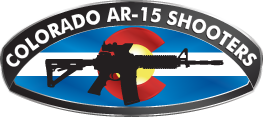That’s what I was thinking. Honestly, the cratering I’m seeing is not the usual primer cratering, it is extremely minimal and somehow even the camera picked it up and magnified it.
Can’t give you that, don’t have a method to measure the ogive yet, see further down.
This sounds like something I should try to measure and see if there is any noticeable difference.
38.0 - .403 (2nd rd was .410 with the loose primer)
38.4 - .403
38.8 - .402
39.2 - .403
39.6 - .402
40.0 - .403
40.4 - .404
40.8 - .403
41.2 - .403
41.6 - .403
42.0 - .403
42.4 - .403
42.8 - .425 (not reliable because we pried this case out, but impressive)
Once fired case of same year - .404”
I measured the remaining 51 cases and they all measured 0.402-0.404”, so there are no signs of loose primer pockets on any of the other brass. While this method will work for determining after firing if the loads are hot, it does not appear to shed any light on what happened or if any of my other cases are compromised.
Yes, I checked it with my 20g check weight every 5 rounds between changing loads, and also used a 168gr SMK, 180gr pistol bullet and 124gr pistol bullet to confirm.
Just measured that. It isn’t a magazine so to speak, but the hinged floor plate that comes stock on Rem 700s.
Rifle Magazine OAL - 2.830” (2.840” would not fit)
Measured by starting with a long case and load into internal magazine (hinged floor plate), then seat a 2.800” dummy round on top. Kept seating deeper until the 2.800” round would insert into the magazine.
I measured the overall length of a bullet again when seating to the lands and found it to be closer to 2.980", however, the bullet is barely held in there (anything longer than 3.010" and the bullet falls out if I look at it wrong).
I got this new measurement by seating bullet to 3.000 or longer, inserting into chamber softly, slowly sliding bolt forward and once the round was centered in the chamber (and not on the floorplate follower), push a dowel rod to touch the bullet. I would then hold the dowel rod loosely so I could feel it move as the bolt slid forward. I would softly tap the back of the bolt with my thumb and once I felt the dowel stop moving, I stopped tapping and pushed the round out slowly with the dowel.
100% stock. The stock is a HS-Precision, not B&C.
Yes, I currently have these on the way:
Hornady LNL Bullet Comparator
Hornady LNL Overall Length Gauge (with modified case)
Hornady Headspace Gauge for 308 (to measure neck setback when I start neck sizing only)
It’s an HS-Precision and I can fit 2.830” in the Rem hinged floor plate “magazine”.
So from here I should measure the overall length of the chamber, determine if I can get the bullet jammed (doubt I can and still have the neck tension to hold the bullet). I will also use the comparator to determine the case length from base to ogive and if I understand correctly:
Chamber length equals the measurement from the bolt face to rifling lands. Then, seat the bullet from case head to ogive to be the chamber length MINUS 0.005” (if possible).
Is there a way to determine the maximum length the round should be from case head to o-give for a given bullet? As in, how do I know if there is enough contact between the neck and bullet?
Also, I measured the diameter of some Win LR (WLR) primers and found them to be .210" and spec calls for .2105 minimum. While I don't have a pair of micrometers to measure to the half-thousanth, the needle on my calipers (Mitutoyo ie not Frankford Arsenal or Harbor Freight cheapies) was EXACTLY on .210" and not even a hair closer to .211".







 Reply With Quote
Reply With Quote
